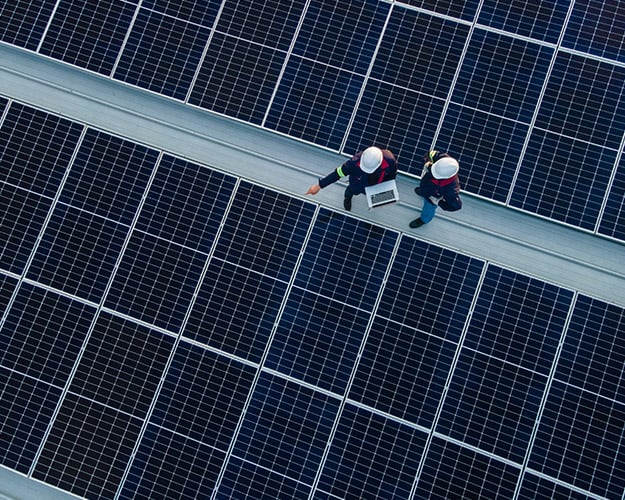Key Takeaways
- Exempt organizations are eligible for clean energy credits as part of the Inflation Reduction Act.
- Applicable entities must pre-register with the IRS to elect direct payment.
- The direct payment election is made in connection with the applicable entity’s annual tax return.
The Inflation Reduction Act (IRA) provided many new financial incentives encouraging investment in clean energy resources. Nonprofit entities can participate in these credits for the first time through electing to receive direct payments.
Tax-exempt entities, with tax years beginning after December 31, 2022, such as charitable organizations, colleges and universities, hospitals, and governments may elect to receive a direct payment of the credit amount.
Typically, tax-exempt organizations do not benefit from tax credit incentives because they do not have a tax obligation to offset with the credit. However, the IRA allows exempt organizations to benefit from clean energy credits by receiving the equivalent credit amount as a direct payment. With direct pay (also known as elective pay), applicable entities can receive financial incentives by investing in eligible energy property or participating in eligible clean energy production activities.
These new potential financial incentives may encourage exempt organizations to explore clean energy options that may not have been previously considered.
What is an Applicable Entity Under the Inflation Reduction Act?
Applicable entities include:
- Organizations exempt from tax under Section 501(a), including Section 501(c) and Section 501(d) States and political subdivisions
- Indian tribal governments
- Alaska Native Corporations
- The Tennessee Valley Authority
- Rural electric co-operatives
- U.S. territories and their political subdivisions (some limitations apply)
What Property is Eligible for Direct Payment?
Property is eligible for the credit in the year it is placed in service and must generally be owned and used by the applicable entity to conduct activities. The credit requirements for applicable entities are the same requirements for taxable entities.
Available credits include:
- Energy Credit (Section 48): Investment in renewable energy projects, including fuel cell, solar, geothermal, small wind, energy storage, biogas, microgrid controllers, and combined heat and power properties.
- Clean Electricity Investment Credit (Section 48E): Mostly replaces the Section 48 energy credit for facilities that begin construction after 2024. Section 48E has the additional requirement that energy properties must have a net zero greenhouse gas emissions rate.
- Renewable Electricity Production Credit (Section 45): Electricity production from eligible renewable sources, including wind, biomass, geothermal, solar, small irrigation, landfill and trash, hydropower, marine, and hydrokinetic energy.
- Clean Electricity Production Credit (Section 45Y): Mostly replaces the Section 45 renewable electricity production credit for facilities that begin construction after 2024. Section 45Y has the additional requirement that energy facilities must have a net zero greenhouse gas emissions rate.
- Commercial Clean Vehicle Credit (Section 45W): Purchase of qualifying vehicles, including passenger vehicles, buses, ambulances, and certain other vehicles for use on public streets, roads, and highways.
- Credit for Alternative Fuel Vehicle Refueling/Recharging Property (Section 30C): Investment in alternative fuel vehicle refueling and charging property, located in low-income and non-urban areas. Refueling Property Credit qualified fuels include electricity, ethanol, natural gas, hydrogen, and biodiesel.
What is the Amount of the Credit?
The credit amount is calculated based on the amount of clean energy produced (production credit) or by determining the qualified tax cost basis (investment tax credit) and applying the applicable rate or percentage.
How Do Exempt Organizations Apply for Direct Payment?
Direct pay is an irrevocable election made on the organization’s tax return. Before making the election, the entity must complete a series of steps, which includes registering the applicable project on the IRS Portal. Publication 5884 provides step-by-step instructions to create an account and register a project.
Are there Additional Considerations for Exempt Organizations Under the Inflation Reduction Act?
The direct pay provision is available when the organization's taxable year begins after December 31, 2022. Organizations with fiscal year ends must give extra attention to projects placed in service during 2023.
Entities making the direct pay election must properly substantiate project costs and credit eligibility. Completing the pre-registration process and receiving direct payment after filing the entity’s tax return does not guarantee credit eligibility and repayment may be required if the IRS determines the entity is not eligible under audit.
The Inflation Reduction Act provides financial incentives for investing in and producing clean energy. These credits are available for both taxable and tax-exempt organizations. As exempt organizations consider clean energy projects, it is important to substantiate the eligibility of clean energy projects and complete the proper documentation.
How the Inflation Reduction Act enhances energy efficient opportunities.
 Read the Article
Read the ArticleBusiness Credits & Incentives
Benefit from available tax credits and deductions to help maximize tax savings.
Who We Are
Eide Bailly is a CPA and business advisory firm helping our clients grow, thrive, and embrace opportunities and innovation.





